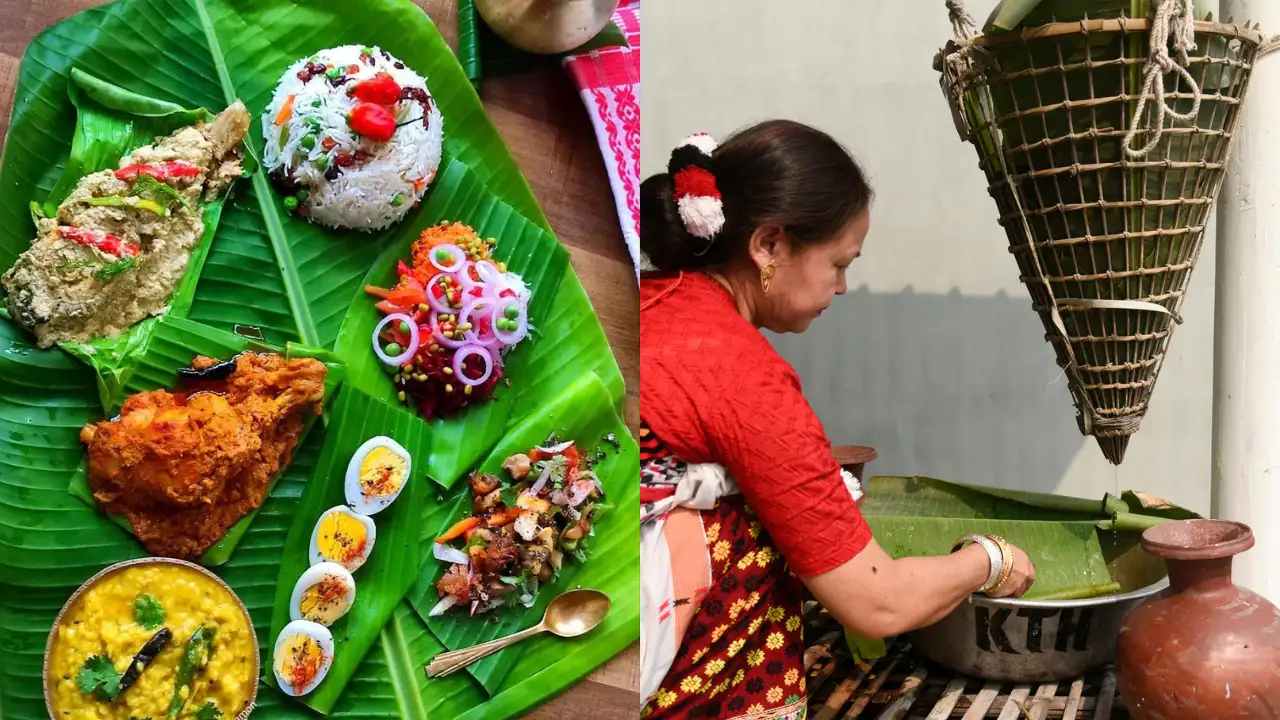Copyright timesnownews

The Seven Sisters of Northeast India — Assam, Arunachal Pradesh, Nagaland, Manipur, Meghalaya, Mizoram, and Tripura — are celebrated not just for their rolling hills, bamboo groves, and mist-shrouded valleys, but also for their rich and distinctive culinary heritage. The region’s food culture thrives on local produce, fermentation techniques, and communal cooking traditions. Each state brings its own signature dishes shaped by its landscape, tribal influences, and natural resources. From hearty pork preparations to finely brewed rice beers, the cuisine beautifully captures the spirit of sustainability, tradition, and cultural depth. Apong – Arunachal Pradesh In Arunachal Pradesh, Apong is a traditional rice beer prepared by different tribes. It is not only a drink but a cultural icon. The product is made from fermented rice and is usually enjoyed during festivals, harvest celebrations, and occasions of community. The drink is a symbol of friendship, hospitality, and social bonding. In most tribes, it is the women who are the chief brewers of Apong, and they use age-old natural fermentation methods that have been handed down from their ancestors. Masor Tenga (Tangy Fish Curry) – Assam Masor tenga is a quintessential Assamese dish. The fish curry is light yet flavourful and represents the typical cuisine of the Assamese people. It is prepared with freshwater fish, tomatoes, and locally-sourced souring agents like thekera tenga (dried kokum) or elephant apple. It is cooked in mustard oil and tempered with fenugreek seeds. This cool dish with its subtle, palate-cleansing flavour is the best in summer. Eromba – ManipurEromba is a homely dish of Manipur. It is made by mashing boiled vegetables such as yams, potatoes, and beans and adding fermented fish called ngari. Red chillies are used to add spice, while herbs are used to add a fresh flavour. It is a very simple but strong dish. It is the representation of a culture that depends on fermentation and fresh produce. Most of the time, it is eaten with rice and is the staple of the majority of Manipuri households. Smoked Pork – Nagaland Smoked pork is one of the most famous dishes in Nagaland. It is prepared by smoking the pork until it is crisp on the outside and juicy on the inside. The meat is first smoked to get the smoky flavours, and then cooked along with bamboo shoots to make a curry. Either Akhuni (spicy fermented soya bean) or Anishi (fermented yam leaves) is used in the dish to give some unique flavours. Sanpiau – MizoramSanpiau is a highly appreciated rice-porridge dish from Mizoram. It has been adapted in the Mizo street food culture. The dish is most commonly made by slow cooking delicate rice until it turns into a porridge-like consistency, and garnished with spring onions, coriander paste, ground black pepper, and a drizzle of fish sauce or meat broth. Sometimes, for extra flavour, garlic and a scrambled or poached egg may be added; however, the focus is still on the rice porridge base and the fresh, aromatic toppings. Jadoh – Meghalaya Jadoh is a very popular dish among Khasis coming from Meghalaya. It is a single-pot meal of red rice cooked with pork and a mixture of local spices. What lends a deep, earthy flavour to the dish is the use of pig liver or offal. Avoiding a heavy gravy and large amounts of oil keeps the dish light. Being a common dish during the Khasi celebrations, Jadoh is usually served with tungrymbai (fermented soybean chutney) or fresh salad. Mui Borok – TripuraMui Borok is the traditional meal in Tripura. It is berma (fermented and dried fish) cooked with vegetables, green chillies, and bamboo shoots. Through the process of fermentation, the dish acquires a sharp flavour that is both rustic and unique. The dish is a representation of the Tripuri people’s eco-friendly way of utilising local products and their strong bond with the environment.



